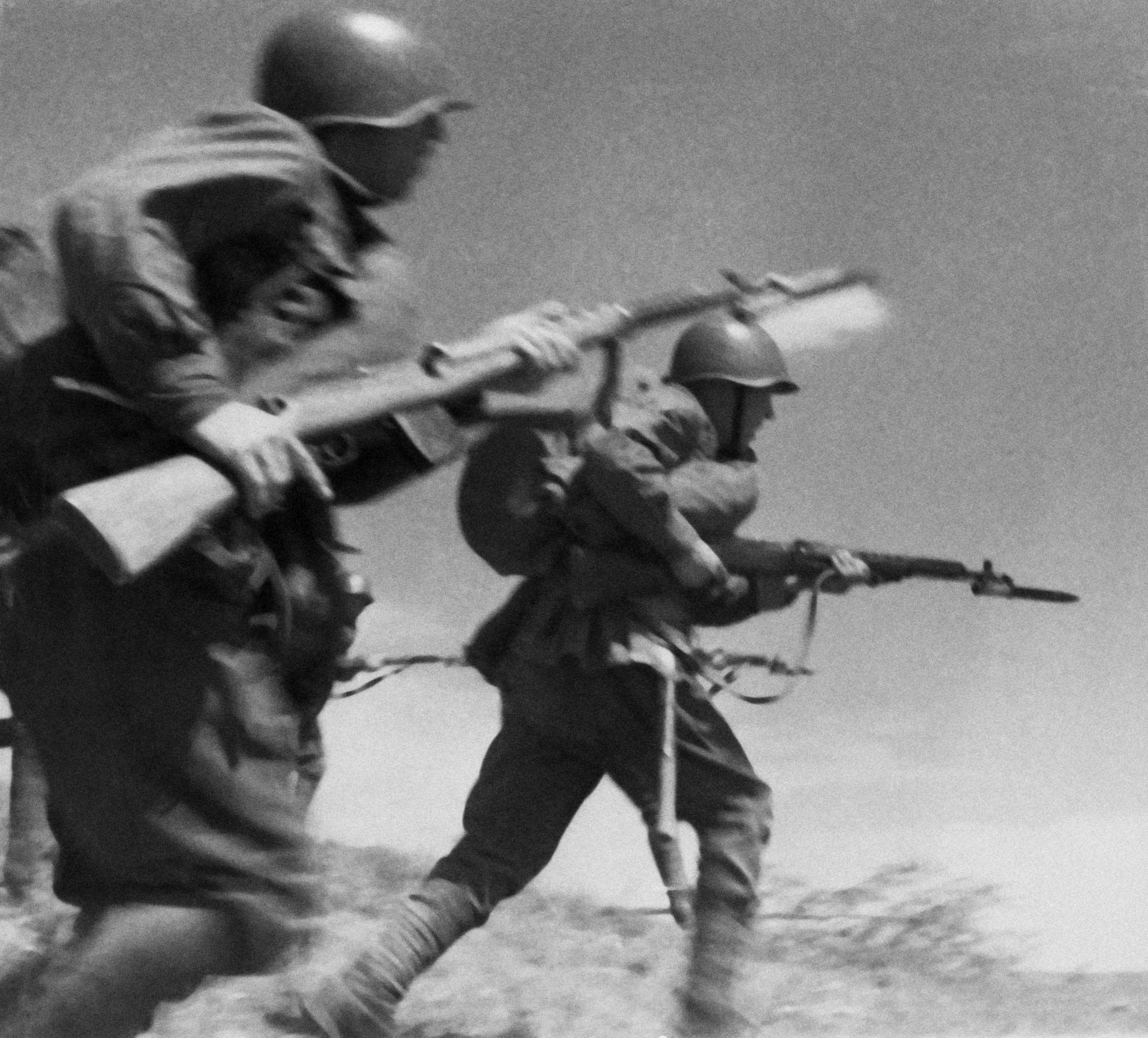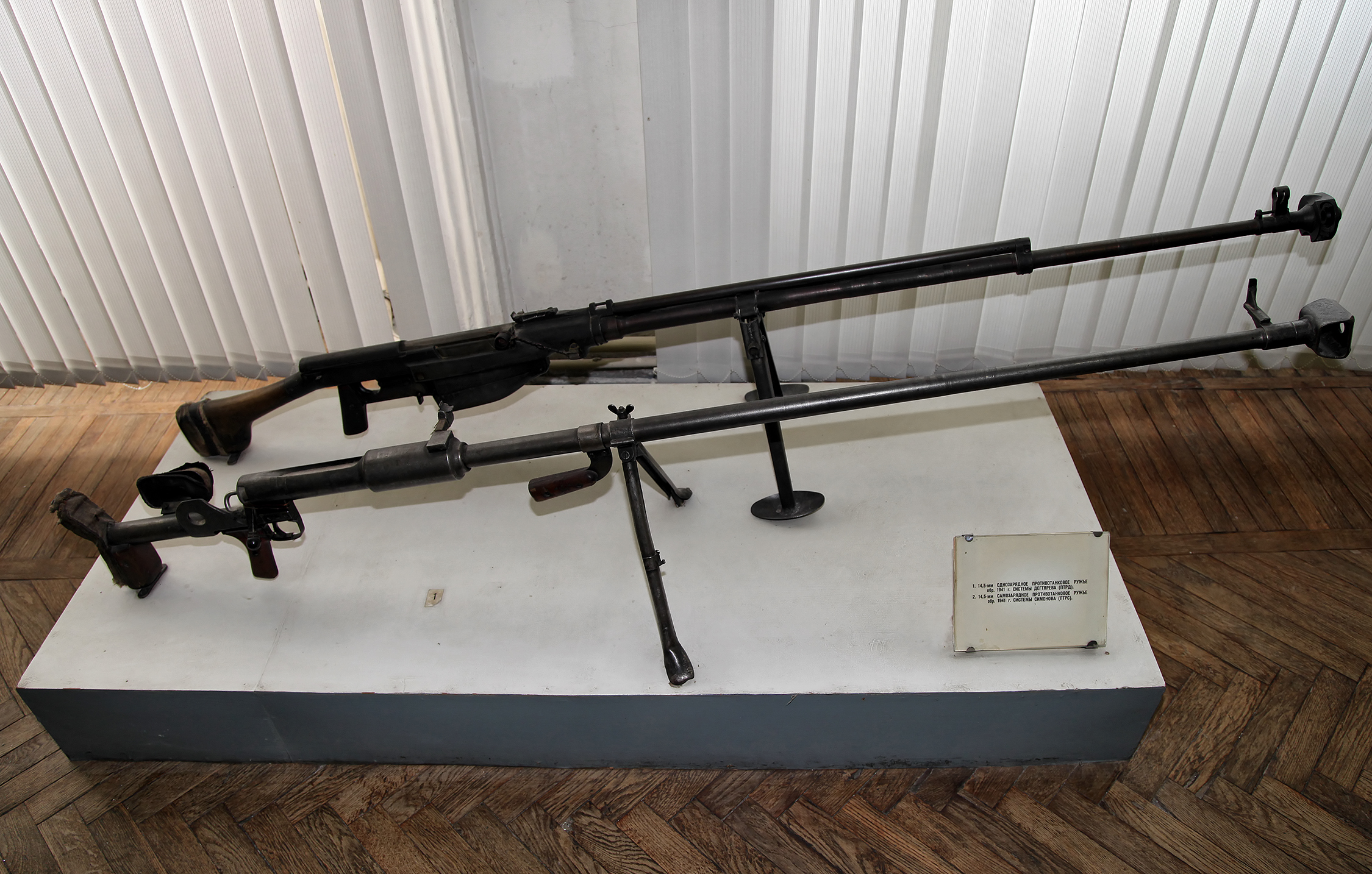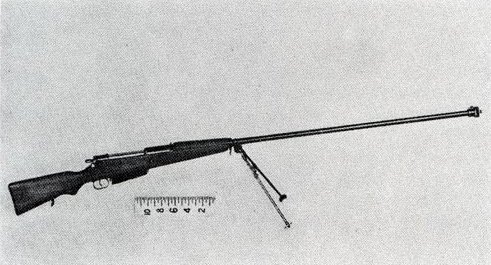|
S.G. Simonov
Sergey Gavrilovich Simonov (Russian: Сергей Гаврилович Симонов; 9 April 1894 – 6 May 1986) was a soviet weapons designer; he is considered one of the fathers of the modern assault rifle. Mostly known for the Samozaryadnyi karabin sistemi Simonova (Russian: Самозарядный карабин системы Симонова), 1945 (Self-loading Carbine, Simonov's system, 1945), or SKS carbine, he also pioneered the assault and semi-automatic rifle field in the 1920s and 1930s, mostly under the supervision of both Vladimir Fyodorov and Fedor Tokarev. His early work preceded both the M1 Garand (of 1933), and the later M1 Carbine, AK-47, and M16 series. Born in 1894 in Fedotovo, Simonov began work in a foundry immediately after completing his elementary school studies. By the end of World War I, after completing a basic technician's course of instruction, he began working on a pioneering automatic rifle designed by Vladimir Grigoryevich Fyodorov, the F ... [...More Info...] [...Related Items...] OR: [Wikipedia] [Google] [Baidu] |
Fedotovo
Fedotovo (russian: Федотово) is the name of several types of inhabited localities in Russia, rural localities in Russia. Ivanovo Oblast As of 2010, two rural localities in Ivanovo Oblast bear this name: *Fedotovo, Puchezhsky District, Ivanovo Oblast, a village#Russia, village in Puchezhsky District *Fedotovo, Shuysky District, Ivanovo Oblast, a village in Shuysky District Kaliningrad Oblast As of 2010, one rural locality in Kaliningrad Oblast bears this name: *Fedotovo, Kaliningrad Oblast, a settlement under the administrative jurisdiction of the town of district significance of Pravdinsk in Pravdinsky District Kaluga Oblast As of 2010, one rural locality in Kaluga Oblast bears this name: *Fedotovo, Kaluga Oblast, a ''village#Russia, selo'' in Borovsky District Republic of Karelia As of 2010, one rural locality in the Republic of Karelia bears this name: *Fedotovo, Republic of Karelia, a village#Russia, village in Medvezhyegorsky District Kostroma Oblast As of 2010, ... [...More Info...] [...Related Items...] OR: [Wikipedia] [Google] [Baidu] |
Tula Arsenal
Imperial Tula Arms Plant (russian: Императорский Тульский оружейный завод, Imperatorskiy Tulsky Oruzheiny Zavod) is a Russian weapons manufacturer founded by Tsar Peter I of Russia in 1712 in Tula, Tula Oblast as Tula Arsenal. Throughout its history, it has produced weapons for the Russian state. Its name was changed from Tula Arsenal to Tula Arms Plant during the Soviet era. History of the plant Historically, the plant produced a wide variety of sports weapons and arms for the Imperial Russian Army. 18th century In the 18th century, Tula Arms Plant was recognized as setting the standard for Russian Arms Production. 19th and early 20th century Reconstructed in the 19th century Tula Arms Factory became one of the most prominent arms factories in Europe. In 1910 the factory started production of the Maxim machine gun. In 1927 planning and design office was established in order to improve the work of all of the plant's designers, the result o ... [...More Info...] [...Related Items...] OR: [Wikipedia] [Google] [Baidu] |
AG-043
AG-043 (АГ-043) was a Soviet compact fully automatic assault rifle or carbine chambered for the 5.45×39mm round, developed in 1975. The weapon is a derivative of the earlier and similar AO-31 which also is Simonov's adaption of the AK-47. The AG-043 had folding stock; a version with fixed stock was given the designation AG-042. Both were designed by Simonov after the GRAU launched Project Modern intended to adopt a carbine capable of automatic fire, inspired by the US experience with XM177 in Vietnam. The Soviet contest for this design was won by Kalashnikov's AKS-74U. See also * List of Russian weaponry * List of assault rifles An assault rifle is a rifle that uses an intermediate cartridge, a detachable magazine, and can switch between semi-automatic/fully automatic fire. Assault rifles are currently the standard service rifles in most modern armies. Some rifles listed ... References External links * http://www.militaryparitet.com/nomen/russia/strel/ogneoru/d ... [...More Info...] [...Related Items...] OR: [Wikipedia] [Google] [Baidu] |
Belorussian Offensive
Operation Bagration (; russian: Операция Багратио́н, Operatsiya Bagration) was the codename for the 1944 Soviet Byelorussian strategic offensive operation (russian: Белорусская наступательная операция «Багратион», Belorusskaya nastupatelnaya Operatsiya ''Bagration''), a military campaign fought between 22 June and 19 August 1944 in Soviet Byelorussia in the Eastern Front of World War II, just over two weeks after the start of Operation Overlord in the west, causing the Germans to have to fight on two major fronts at the same time. The Soviet Union destroyed 28 of 34 divisions of Army Group Centre and completely shattered the German front line. It was the biggest defeat in German military history, with around 450,000 German casualties, while 300,000 other German soldiers were cut off in the Courland Pocket. On 22 June 1944, the Red Army attacked Army Group Centre in Byelorussia, with the objective of encircling ... [...More Info...] [...Related Items...] OR: [Wikipedia] [Google] [Baidu] |
Semi-automatic Rifle
A semi-automatic rifle is an autoloading rifle that fires a single cartridge with each pull of the trigger, and uses part of the fired cartridge's energy to eject the case and load another cartridge into the chamber. For comparison, a bolt-action rifle requires the user to cycle the bolt manually before they can fire a second time, and a fully automatic rifle fires continuously until the trigger is released. History The first design of a recoil-operated semi-automatic rifle is attributed to Ferdinand Mannlicher, who unveiled the design in 1885 based on work begun in 1883. Other non-gas operated semi-automatic models were the Model 85 and Mannlicher Models 91, 93 and 95 rifles. The designs were deeply flawed and never made past the conceptual/prototype stage due to issues inherent to the black powder used in their cartridges (based around the Austrian 11×58mmR M/77), such as insufficient velocity and excessive fouling; automatic firearms would only become feasible after smoke ... [...More Info...] [...Related Items...] OR: [Wikipedia] [Google] [Baidu] |
SVT-40
The SVT-40 (Samozaryadnaya Vintovka Tokareva, Obrazets 1940 goda, "Tokarev self-loading rifle, model of 1940", Russian: Самозарядная винтовка Токарева, образец 1940 года, often nicknamed "'' Sveta''") is a Soviet semi-automatic battle rifle. The SVT-40 saw widespread service during and after World War II. It was intended to be the Soviet Red Army's new service rifle, but its production was disrupted by the German invasion in 1941, resulting in a change back to the Mosin–Nagant rifle for the duration of World War II. After the war, the Soviet Union adopted new rifles, such as the SKS and the AK-47. History In the early 1930s, the Soviet Union requested the development of a semi-automatic rifle to replace the Mosin-Nagant, taking inspiration from the Mexican Mondragón rifle. The design was left up to two individuals, Sergei Simonov and Fedor Tokarev. Simonov, who had experience in developing the Fedorov Avtomat, created a prototype f ... [...More Info...] [...Related Items...] OR: [Wikipedia] [Google] [Baidu] |
Rifle
A rifle is a long-barreled firearm designed for accurate shooting, with a barrel that has a helical pattern of grooves ( rifling) cut into the bore wall. In keeping with their focus on accuracy, rifles are typically designed to be held with both hands and braced firmly against the shooter's shoulder via a buttstock for stability during shooting. Rifles are used extensively in warfare, law enforcement, hunting, shooting sports, and crime. The term was originally ''rifled gun'', with the verb ''rifle'' referring to the early modern machining process of creating groovings with cutting tools. By the 20th century, the weapon had become so common that the modern noun ''rifle'' is now often used for any long-shaped handheld ranged weapon designed for well-aimed discharge activated by a trigger (e.g., personnel halting and stimulation response rifle, which is actually a laser dazzler). Like all typical firearms, a rifle's projectile (bullet) is propelled by the contained def ... [...More Info...] [...Related Items...] OR: [Wikipedia] [Google] [Baidu] |
Russia
Russia (, , ), or the Russian Federation, is a List of transcontinental countries, transcontinental country spanning Eastern Europe and North Asia, Northern Asia. It is the List of countries and dependencies by area, largest country in the world, with its internationally recognised territory covering , and encompassing one-eighth of Earth's inhabitable landmass. Russia extends across Time in Russia, eleven time zones and shares Borders of Russia, land boundaries with fourteen countries, more than List of countries and territories by land borders, any other country but China. It is the List of countries and dependencies by population, world's ninth-most populous country and List of European countries by population, Europe's most populous country, with a population of 146 million people. The country's capital and List of cities and towns in Russia by population, largest city is Moscow, the List of European cities by population within city limits, largest city entirely within E ... [...More Info...] [...Related Items...] OR: [Wikipedia] [Google] [Baidu] |
PTRS
The PTRS-41 or Simonov anti-tank rifle (russian: ПротивоТанковое Ружьё Симонова) is a World War II-era semi-automatic anti-tank rifle firing the 14.5×114mm cartridge. Design The PTRS-41 was produced and used by the Soviet Union during World War II. In the years between the World Wars, the Soviet Union began experimenting with different types of armour-piercing anti-tank cartridges. Finding the 12.7×108mm insufficient, they began development of what became the 14.5×114mm armour-piercing round. Rukavishnikov developed to use this cartridge, but it was not successful because of some manufacturing issues, a sufficient number of more effective anti-tank guns in the Red Army, and high expectations about new German tank armour. In 1941, the loss of huge amounts of anti-tank artillery created a need for a stop-gap anti-tank weapon, so famous USSR weapons designers such as Vasily Degtyaryov and Sergei Gavrilovich Simonov were tasked to design anti-tank ... [...More Info...] [...Related Items...] OR: [Wikipedia] [Google] [Baidu] |
Anti-tank Rifle
An anti-tank rifle is an anti-materiel rifle designed to penetrate the vehicle armor, armor of armored fighting vehicles, most commonly tanks, armored personnel carriers, and infantry fighting vehicles. The term is usually used for weapons that can be carried and used by one person, but is sometimes used for larger weapons. The usefulness of rifles for this purpose ran from the introduction of tanks in World War I until the Korean War. While medium and heavy tank armor became too thick to be penetrated by rigid projectiles from rifles that could be carried by a single soldier, anti-tank rifles continued to be used against other "soft" targets, though recoilless rifles and rocket-propelled grenades such as the bazooka were also introduced for infantry close-layer defense against tanks. History The tug of war between armour and projectiles had been developing for a long while among naval vessels, since the advent of the Ironclad warship, Ironclad. It wasn't until soldiers met armo ... [...More Info...] [...Related Items...] OR: [Wikipedia] [Google] [Baidu] |
Submachine Gun
A submachine gun (SMG) is a magazine-fed, automatic carbine designed to fire handgun cartridges. The term "submachine gun" was coined by John T. Thompson, the inventor of the Thompson submachine gun, to describe its design concept as an automatic firearm with notably less firepower than a machine gun (hence the prefix " sub-"). As a machine gun must fire rifle cartridges to be classified as such, submachine guns are not considered machine guns. The submachine gun was developed during World War I (1914–1918) as a close quarter offensive weapon, mainly for trench raiding. At its peak during World War II (1939–1945), millions of SMGs were made for use by regular troops, clandestine commandos and partisans alike. After the war, new SMG designs appeared frequently.Military Small Arms Of The 20th Century. Ian Hogg & John Weeks. Krause Publications. 2000. p93 However, by the 1980s, SMG usage decreased. Today, submachine guns have been largely replaced by assault rifles, w ... [...More Info...] [...Related Items...] OR: [Wikipedia] [Google] [Baidu] |
World War II
World War II or the Second World War, often abbreviated as WWII or WW2, was a world war that lasted from 1939 to 1945. It involved the vast majority of the world's countries—including all of the great powers—forming two opposing military alliances: the Allies and the Axis powers. World War II was a total war that directly involved more than 100 million personnel from more than 30 countries. The major participants in the war threw their entire economic, industrial, and scientific capabilities behind the war effort, blurring the distinction between civilian and military resources. Aircraft played a major role in the conflict, enabling the strategic bombing of population centres and deploying the only two nuclear weapons ever used in war. World War II was by far the deadliest conflict in human history; it resulted in 70 to 85 million fatalities, mostly among civilians. Tens of millions died due to genocides (including the Holocaust), starvation, ma ... [...More Info...] [...Related Items...] OR: [Wikipedia] [Google] [Baidu] |







